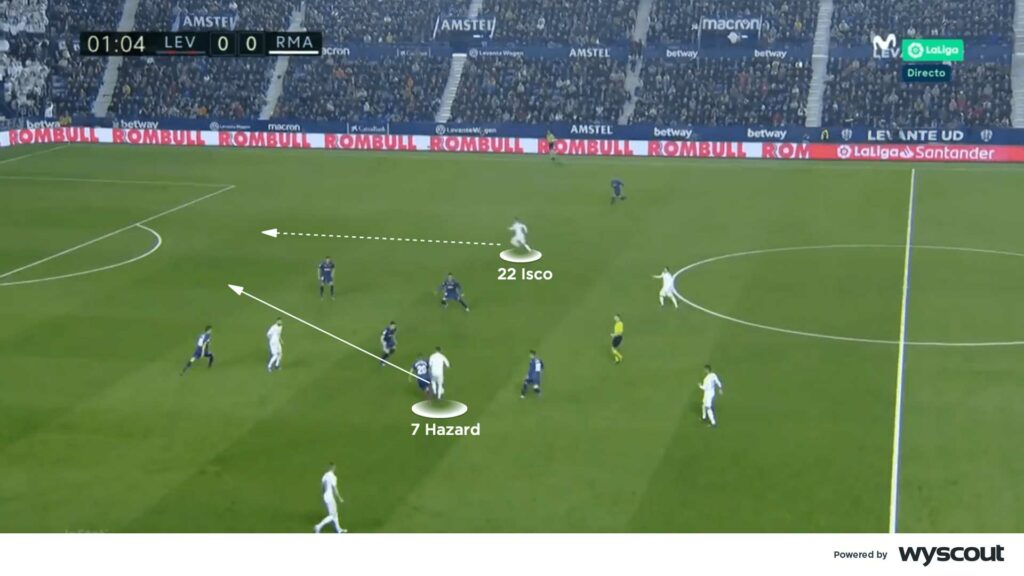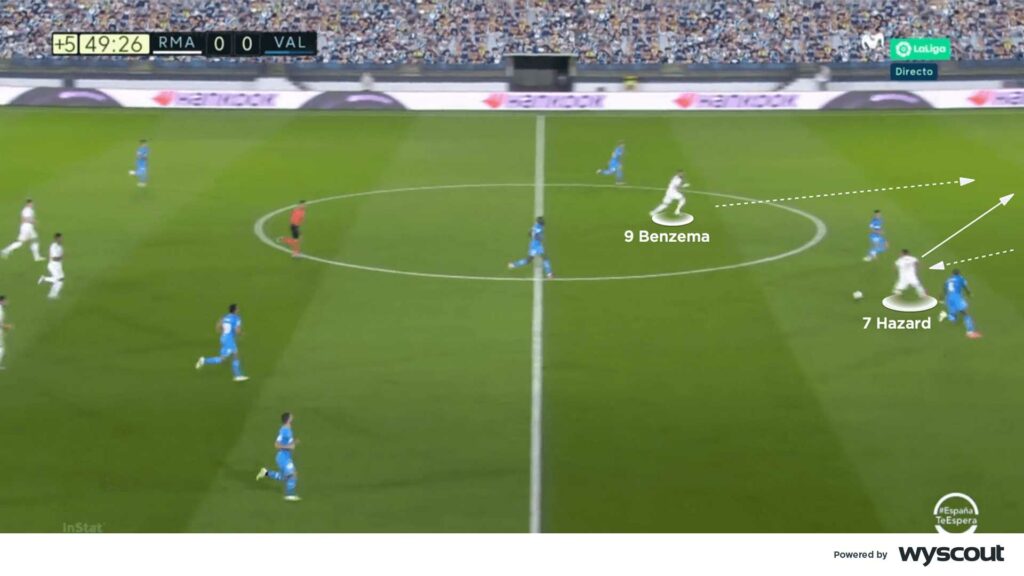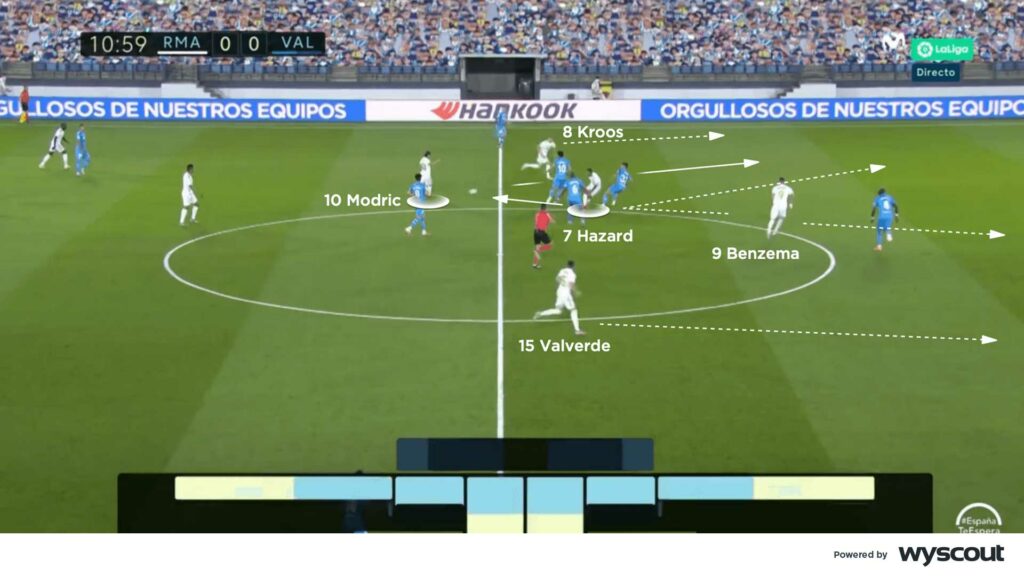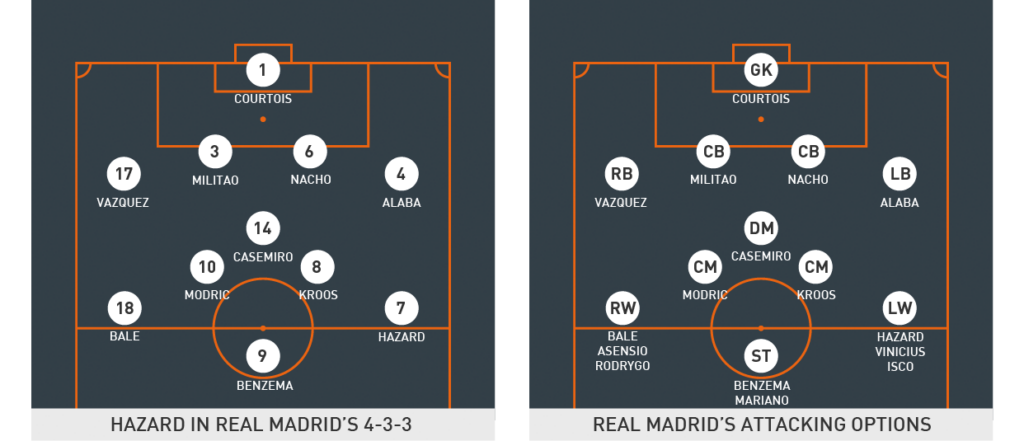
eden hazard
Real Madrid, 2019–
Profile
Having proved himself one of the Premier League’s best players of the previous decade, Eden Hazard made the move to Real Madrid in the summer of 2019. Year upon year at Chelsea, under six different managers, teams were built to get the most from him, but he had a slow start in Spain as he adapted to playing in not only a new system, but one in which he was no longer the leading figure. Two separate bone breaks – one in his foot and another in his leg shortly after returning to fitness – appeared as though they might derail his entire first season at Real.
After 2019/20 was disrupted by the coronavirus pandemic, Hazard, back from his two serious injuries, was given a third chance to end his debut campaign on a positive note. Fitness concerns persisted during his second season there, but under Carlo Ancelotti he has been given a chance to re-establish himself. It was Ancelotti's predecessor Zinedine Zidane who was determined to bring him to Real, but as he started rebuilding the team he inherited, Ancelotti described the Belgian's 2021/22 as "just the year to bring the best out of him".
Tactical analysis
Hazard is one of those wonderful footballers about whom everyone knows everything there is to know – and yet he constantly springs surprises. His dribbling is his greatest strength, but opponents struggle terribly to stop him without committing fouls. The challenge for his team, and indeed his manager, is how to get him into positions where he can isolate defenders and make use of that incredible dribbling ability.
He isn’t a winger who tries to get to the byline and put crosses into the penalty area – in fact, he is far less effective when he takes that route on to his weaker left foot. Instead, he prefers to come infield and find feet, fizzing a pass to the centre-forward before darting to receive a return pass or making a run in behind. He is a crisp passer who rarely misses his target, often because he has created enough space to make a pass following a quick move away from his marker.
The combination of Hazard’s low centre of gravity, the fact he takes so many small touches when running with the ball, his lightning-quick reactions and his powerful, explosive bursts from a standing start make him one of the planet’s best dribblers. He is a master of manipulating his opponent’s body position in one-on-one situations. He draws a player towards him before using the defender’s momentum against him by changing direction quickly. Doing so makes him almost as dangerous when he has his back to goal as he is when facing his opponent. He is exceptional at shifting his opponent’s body weight on to one foot, leaning in that direction to further deceive the defender and exploding in the opposite direction. It is a minor detail, but one that sets Hazard apart from many of Europe’s other top dribblers.

He is almost impossible to read or predict. Defenders who get close enough to try and make a tackle invariably lose their grip on him and rarely manage to stop him legally. For years he was the most fouled player in the Premier League – and he is perhaps winning more free-kicks than ever before. In his first season in La Liga, Hazard was fouled 3.1 times per appearance – a higher rate than in any of his seven seasons at Chelsea and the third most in La Liga. He is as difficult as ever to halt.
One aspect of Hazard’s game that does not garner as much praise as it should is his passing. He is a selfless attacker who creates far more chances than he attempts himself, and he often shows exceptional vision and ability to first spot and then execute a pass (above).
As he tends to dribble with the outside of his foot and take lots of touches, he then needs very little backlift when executing a pass. Not only that, when he dribbles, he is constantly looking up to assess his surroundings. Given he will likely beat a defender if they try to tackle him, opponents usually stand off him – but Hazard has the passing ability and vision to cause problems in other ways. That is not a skill that many particularly associate with the Belgian, but it is a significant part of what makes him such a dangerous attacker.

Role for Real Madrid
As was the case at Chelsea, Hazard has usually started on the left at Real, but he has often been given more of a free role – so much so that he has even started in the number 10 position and essentially played as a second striker behind Karim Benzema (above).
He has developed a good understanding with Benzema, for whom he has proved the perfect foil. At 32 years of age, and in his 11th season at Real, Benzema ended 2019/20 with the second-highest league goals tally of any season in his career, scoring 21 times.
Zidane’s was often characterised – rather unfairly – as a counter-attacking team when there was actually far more to Real's game. They were very comfortable in possession and often built play slowly. In Raphaël Varane and Sergio Ramos, they had brilliant ball-playing centre-backs, and Toni Kroos and Luka Modric are two of Europe’s best passers in midfield. They improved markedly under Zidane at breaking through low-block defences.

They regardless remained lethal on the break; Hazard’s ability during transitions will have been a significant reason Real decided to bring him to the Bernabéu.
With his sharp movement at the point of a regain of possession, Hazard does a great job of drawing opponents out of position when they are already at their most disorganised. As the player who provides Benzema with his closest support, he often made those movements away from goal to set a pass to a forward-facing teammate who could then feed midfield runners who burst beyond Hazard (above). The Belgian is so quick himself that he then turns and sprints to catch up play and adds another number to their attack. He can, all on his own, turn defence into attack in the blink of an eye.
Hazard showed at the end of an injury-blighted first season in Spain how important a role he can play for Real, and with a consistent run of games he can get back to his best. Even with the emergence of Vinícius Júnior, there are signs he retains the qualities to make his move there a success.



